#e1dfde Color Information
In a RGB color space, hex #e1dfde is composed of 88.2% red, 87.5% green and 87.1% blue. Whereas in a CMYK color space, it is composed of 0% cyan, 0.9% magenta, 1.3% yellow and 11.8% black. It has a hue angle of 20 degrees, a saturation of 4.8% and a lightness of 87.6%. #e1dfde color hex could be obtained by blending #ffffff with #c3bfbd. Closest websafe color is: #cccccc.
-
- R 88
- G 87
- B 87
-
- C 0
- M 1
- Y 1
- K 12
● #e1dfde color description : Light grayish orange.
#e1dfde Color Conversion
The hexadecimal color #e1dfde has RGB values of R:225, G:223, B:222 and CMYK values of C:0, M:0.01, Y:0.01, K:0.12. Its decimal value is 14802910.
| Hex triplet | e1dfde | #e1dfde |
|---|---|---|
| RGB Decimal | 225, 223, 222 | rgb(225,223,222) |
| RGB Percent | 88.2, 87.5, 87.1 | rgb(88.2%,87.5%,87.1%) |
| CMYK | 0, 1, 1, 12 | |
| HSL | 20°, 4.8, 87.6 | hsl(20,4.8%,87.6%) |
| HSV (or HSB) | 20°, 1.3, 88.2 | |
| Web Safe | cccccc | #cccccc |
| CIE-LAB | 88.949, 0.498, 0.72 |
|---|---|
| XYZ | 70.621, 74.057, 79.677 |
| xyY | 0.315, 0.33, 74.057 |
| CIE-LCH | 88.949, 0.875, 55.328 |
| CIE-LUV | 88.949, 1.183, 1.007 |
| Hunter-Lab | 86.056, -4.114, 5.344 |
| Binary | 11100001, 11011111, 11011110 |
Color Schemes with #e1dfde
Alternatives to #e1dfde
Below, you can see some colors close to #e1dfde. Having a set of related colors can be useful if you need an inspirational alternative to your original color choice.
#e1dfde Preview
This text has a font color of #e1dfde.
<span style="color:#e1dfde;">Text here</span>This paragraph has a background color of #e1dfde.
<p style="background-color:#e1dfde;">Content here</p>This element has a border color of #e1dfde.
<div style="border:1px solid #e1dfde;">Content here</div>.text {color:#e1dfde;}.background {background-color:#e1dfde;}.border {border:1px solid #e1dfde;}Shades and Tints of #e1dfde
A shade is achieved by adding black to any pure hue, while a tint is created by mixing white to any pure color. In this example, #080807 is the darkest color, while #fdfdfd is the lightest one.
-
#080807
#080807rgb(8,8,7) -
#121111
#121111rgb(18,17,17) -
#1d1b1a
#1d1b1argb(29,27,26) -
#272523
#272523rgb(39,37,35) -
#312e2d
#312e2drgb(49,46,45) -
#3b3836
#3b3836rgb(59,56,54) -
#46423f
#46423frgb(70,66,63) -
#504b49
#504b49rgb(80,75,73) -
#5a5552
#5a5552rgb(90,85,82) -
#655e5b
#655e5brgb(101,94,91) -
#6f6865
#6f6865rgb(111,104,101) -
#79726e
#79726ergb(121,114,110) -
#837b77
#837b77rgb(131,123,119)
-
#8d8582
#8d8582rgb(141,133,130) -
#968f8c
#968f8crgb(150,143,140) -
#a09996
#a09996rgb(160,153,150) -
#a9a3a0
#a9a3a0rgb(169,163,160) -
#b2adab
#b2adabrgb(178,173,171) -
#bcb7b5
#bcb7b5rgb(188,183,181) -
#c5c1bf
#c5c1bfrgb(197,193,191) -
#cecbc9
#cecbc9rgb(206,203,201) -
#d8d5d4
#d8d5d4rgb(216,213,212) -
#e1dfde
#e1dfdergb(225,223,222) -
#eae9e8
#eae9e8rgb(234,233,232) -
#f4f3f3
#f4f3f3rgb(244,243,243) -
#fdfdfd
#fdfdfdrgb(253,253,253)
Tones of #e1dfde
A tone is produced by adding gray to any pure hue. In this case, #e1dfde is the less saturated color, while #fed5c1 is the most saturated one.
-
#e1dfde
#e1dfdergb(225,223,222) -
#e3dedc
#e3dedcrgb(227,222,220) -
#e6ddd9
#e6ddd9rgb(230,221,217) -
#e8ddd7
#e8ddd7rgb(232,221,215) -
#ebdcd4
#ebdcd4rgb(235,220,212) -
#eddbd2
#eddbd2rgb(237,219,210) -
#f0dacf
#f0dacfrgb(240,218,207) -
#f2d9cd
#f2d9cdrgb(242,217,205) -
#f4d9cb
#f4d9cbrgb(244,217,203) -
#f7d8c8
#f7d8c8rgb(247,216,200) -
#f9d7c6
#f9d7c6rgb(249,215,198) -
#fcd6c3
#fcd6c3rgb(252,214,195) -
#fed5c1
#fed5c1rgb(254,213,193)
Color Blindness Simulator
Below, you can see how #e1dfde is perceived by people affected by a color vision deficiency. This can be useful if you need to ensure your color combinations are accessible to color-blind users.
